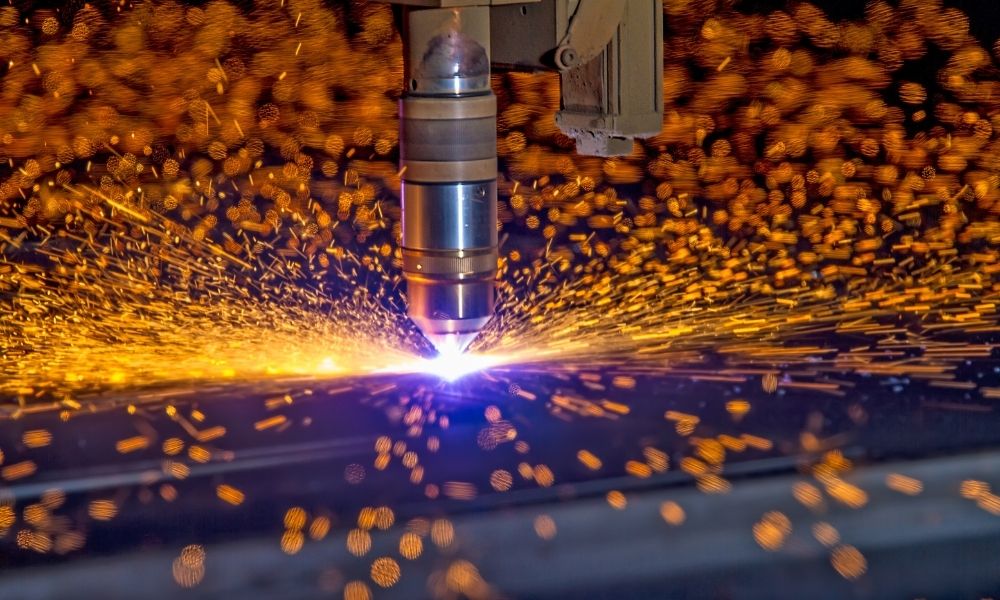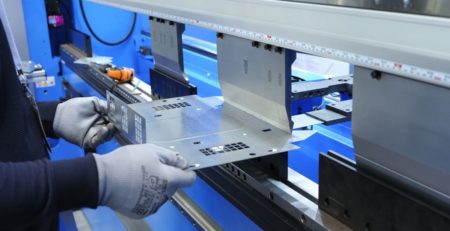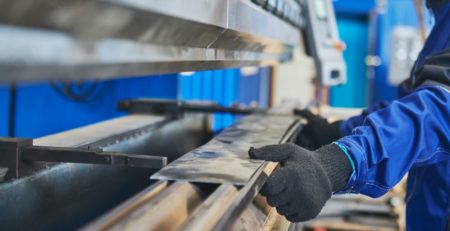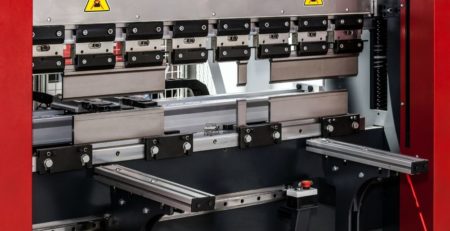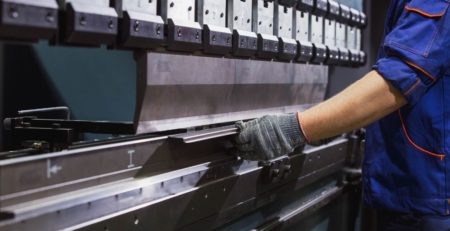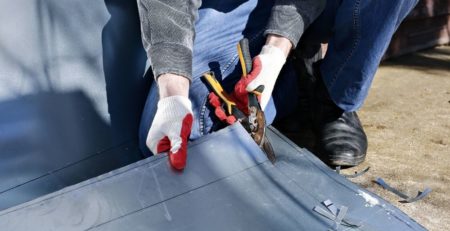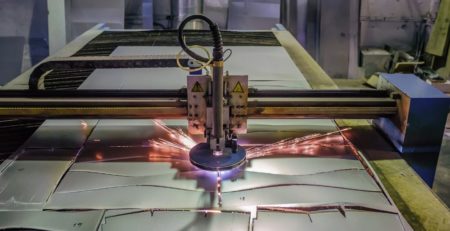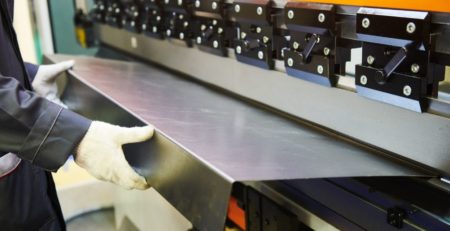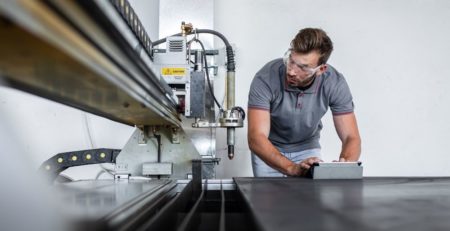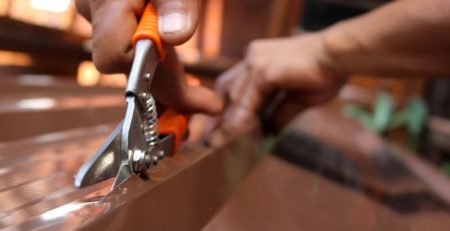Types of Plasma Cutter Gases and Their Benefits
When doing research, an operator or owner could be faced with a dizzying array of gas options. Many fabricators choose a plasma cutting system with dual gas or multi-gas capabilities. This means that a variety of plasma and shield gases can be used for various applications. A plasma torch is simply a highly charged ion that blazes through electrically charged bases such as metal plates.
A plasma welding machine uses different kinds of gases to tear through metals. The plasma cutter gas transmits an electric arc to split open a thick metal piece. Most plasma systems use several gases simultaneously in the welding processes. As such, most plasma cutters use a mixture of gases to enhance their heat intensity.
Keep reading to explore the types of plasma cutter gases and their benefits and make best-case recommendations for cutting the three most common types of materials: mild steel, stainless steel, and aluminum.
Categories of Gas
Below are the dominant gas types used for plasma cutting operations. Generally, plasma cutting gases conform to these main categories.
- Control Fuel. Plasma cutting requires an ideal environment to work well. The way a plasma cutter works allows specific components to abide by some conditions to facilitate the accelerated jet of a plasma torch. Control fuel is distinct in that it leads to the plasma head. It also regulates the heat around the torch protection nozzle. This configuration ensures that the cut flame only ignites only after the correct setting of the plasma head.
- Plasma Cutter Fuel. Plasma cutter fuels offer both basic and high-end models that involve different levels of heating. The first stage occurs during the ignition is weak, then more power flows during the cutting stage. Several gases are involved in these two stages.
- Swirl Fuel. When the plasma cutting process is underway, materials could bend or wrap due to intense heat. This reaction makes cutting less accurate. To prevent these deformities and imperfections, fabricators use swirl fuel.
Varieties of Plasma Gases
Air
Air is the most versatile plasma gas; it produces good cut quality and speed on stainless steel, mild steel, and aluminum. Air also lowers costs because it is not necessary to purchase gases. However, air is not free. Shop air must be cleaned to remove contamination such as particulate, oil mist, and moisture. The best solution for air plasma systems is a good-sized, dedicated air compressor, a refrigerated dryer, and a bank of filters to take out the contaminants.
The weldability of the cutting edge is a concern with air plasma. Some nitriding and oxidation of the cut surface occur with air plasma, and this can cause porosity in welds. Air is a good option for many shops for its versatility, good speed, low dross levels, and parts life up to 600 starts.
Oxygen
Oxygen has become the standard in the industry at cutting mild steel because it provides the best, clean-cut quality and the fastest cutting speed of any plasma gas. However, a plasma cutting aluminum plate or stainless steel plate with oxygen plasma gas is not recommended. The disadvantages of oxygen are the cost of the gas and the life of consumable parts. State-of-the-art plasma oxygen plasma systems, however, use inert starting gases, such as nitrogen, to achieve similar parts life to nitrogen or air systems. These systems have parts life in the 800-1500 start range. A decrease in secondary operations usually offsets increased consumable and gas costs to remove dross and straightened bevel parts. Air shield is typically used with oxygen plasma.
Nitrogen
Nitrogen was used in most early plasma cutting torch processes. It’s still the best choice if you cut a lot of stainless steel or aluminum. The cut quality and parts life are excellent (over 1000 starts is average. However, on thicker materials at the end of your plasma system’s capability, switch to Ardon-hydrogen.
In general, air is the best secondary gas when using nitrogen plasma. CO2 also works well, slightly improving the finish, cutting speed, and parts life over the use of air. But CO2 costs more than air and requires multiple manifold gas cylinders or a bulk system to deliver adequate flow. Water is an excellent secondary to use with nitrogen plasma if the system allows it. Using it when cutting stainless steel or aluminum creates a smooth, shiny cut surface. Water secondary does require a water table to avoid spillage.
Argon Hydrogen
Argon hydrogen is the plasma of choice for thick stainless steel and aluminum cutting (greater than .5”). The mixture typically uses 35% hydrogen and 65% argon. Argon hydrogen is the hottest burning plasma gas and provides the most cutting power.
Argon hydrogen is used in water injection torches to up to 1000 amps to cut up to 6” stainless steel. Argon hydrogen provides a straight cut and a smooth, almost-polished surface on stainless steel in multi-gas torches. Some jagged dross may occur along the top or bottom edge. Nitrogen is usually used as a shield gas with argon hydrogen. The disadvantage of this set-up is the expense.
Four Rules of Thumb To Consider
The best gas to use depends on three primary considerations: cut quality, productivity, and economy.
- Mild Steel. For mild steel, use oxygen plasma and air shield for a clean, smooth cut quality, lowest dross levels, minimal re-work, excellent weldability, and excellent productivity.
- Under .5” thickness. For best cut quality on stainless steel and aluminum under .5”, use nitrogen plasma and air secondary for the right balance of cut quality and affordability. For a slightly better and faster cut, use CO2 as the secondary. If your system allows, a water shield will spend provide the best edge quality.
- Over .5” thickness. For best cut quality on thick stainless steel or aluminum, use argon hydrogen with nitrogen secondary. Also, make sure your system is equipped for safe operation with argon hydrogen gas.
- Economy. For the most economical cutting, a clean, dry shop air is the best choice for cutting aluminum, mild steel, and stainless steel.
As you can see, there is much to learn about the types of plasma cutter gases and their benefits. For more information, contact Mac-Tech. Mac-tech offers a full array of plasma cutting systems, and we can talk to you about what is best for your company.


